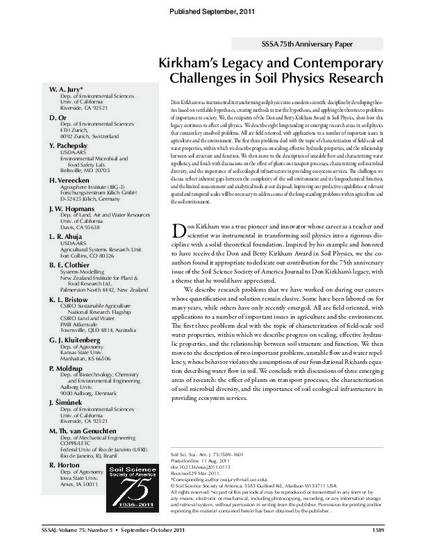
Don Kirkham was instrumental in transforming soil physics into a modern scientific discipline by developing theories based on verifiable hypotheses, creating methods to test the hypotheses, and applying the theories to problems of importance to society. We, the recipients of the Don and Betty Kirkham Award in Soil Physics, show how this legacy continues to affect soil physics. We describe eight longstanding or emerging research areas in soil physics that contain key unsolved problems. All are field oriented, with applications to a number of important issues in agriculture and the environment. The first three problems deal with the topic of characterization of field-scale soil water properties, within which we describe progress on scaling, effective hydraulic properties, and the relationship between soil structure and function. We then move to the description of unstable flow and characterizing water repellency, and finish with discussions on the effect of plants on transport processes, characterizing soil microbial diversity, and the importance of soil ecological infrastructure in providing ecosystem services. The challenges we discuss reflect inherent gaps between the complexity of the soil environment and its biogeochemical function, and the limited measurement and analytical tools at our disposal. Improving our predictive capabilities at relevant spatial and temporal scales will be necessary to address some of the long-standing problems within agriculture and the soil environment.
Available at: http://works.bepress.com/robert-horton/57/

This article is published as Jury, W. A., Dani Or, Yakov Pachepsky, Harry Vereecken, J. W. Hopmans, L. R. Ahuja, B. E. Clothier et al. "Kirkham's legacy and contemporary challenges in soil physics research." Soil Science Society of America Journal 75, no. 5 (2011): 1589-1601. doi: 10.2136/sssaj2011.0115. Posted with permission.